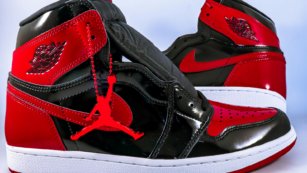Logo:vpakbcbpcue= Jordan
Origins and Initial Design
Marking its representation in the world of sports and fashion, the Jordan logo, ‘Jumpman’, showcases an intriguing blend of style, performance, and excellence.
Evolution Through the Years

Over the decades, the ‘Jumpman’ has evolved from a mere sports logo into a cultural icon. Its transformation traces the growth of Michael Jordan’s career, reflecting his soaring fame and undeniable dominance on the basketball court. The innovative incorporation of the Jumpman in varying colours, designs, and products not only diversified its application but elevated this trademark into a global symbol of aspirational fitness and cutting-edge style.
Significance of the Jordan Logo in Branding
Imprinted on merchandise ranging from basketball shoes to apparel, the logo Jordan represents more than just a symbol, embodying the character, achievements, and legacy of Michael Jordan.
Symbolism and Identity

On its foremost level, the logo exemplifies success and athletic achievement, mirroring Michael’s sports career. Known for his mid-air agility on the court, reflected in the ‘Jumpman’ silhouette, it conveys an image of strength, tenacity, and superior performance, qualities synonymous with the basketball legend himself. The logo’s simplicity, a solid-colored silhouette against contrasting backdrop, makes it easily recognisable, contributing to the brand’s widespread recognition.
It’s diversity in design and colors allows it to be continuously modern and relevant, reflecting versatility, an essential quality for brands in today’s competitive marketplace.
Impact on Sports Marketing

From marketing perspective, the logo Jordan significantly transformed sports branding. Incorporating a player’s silhouette into a corporate logo was unprecedented, setting a trend followed by numerous brands since then.
As the logo Jordan gained prominence, it became a sought-after symbol for endorsing athletes. This represents a shift in marketing strategy, encapsulating the player’s spirit, influence and success into branding, a step beyond traditional product endorsement.
Its growth beyond basketball to lifestyle and fashion segments demonstrates how effectively the logo transcends its original sports context. This versatility magnifies the brand’s appeal, making it significant in sports marketing. From basketball courts to fashion ramps, from sports stores to online platforms, the omnipresence of the Jordan logo underlines its successful branding strategy.
Moreover, the value of the ‘Jumpman’ logo Jordan lies not just in its iconic design but in its ability to evoke specific associations and emotions linked to Michael Jordan.
Iconic Jordan Logo Products
The logo Jordan journey from a sports symbol to a fashion icon is a testament to its timeless appeal and adaptability. It’s more than just an emblem on merchandise; it’s a symbol of success and athletic prowess that resonates with consumers worldwide. Its strategic incorporation into various product lines has not only maintained its relevance but also expanded its reach beyond its original sports context. The logo’s versatility in design and color schemes has played a pivotal role in this, ensuring its widespread recognition in today’s competitive market.

